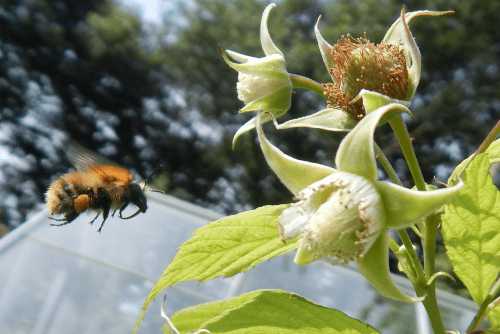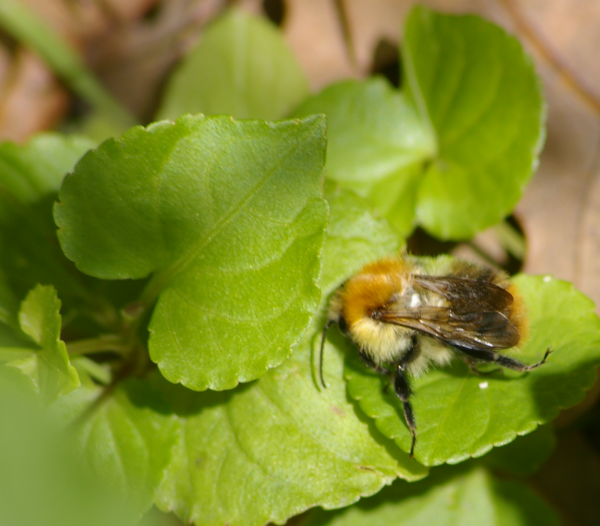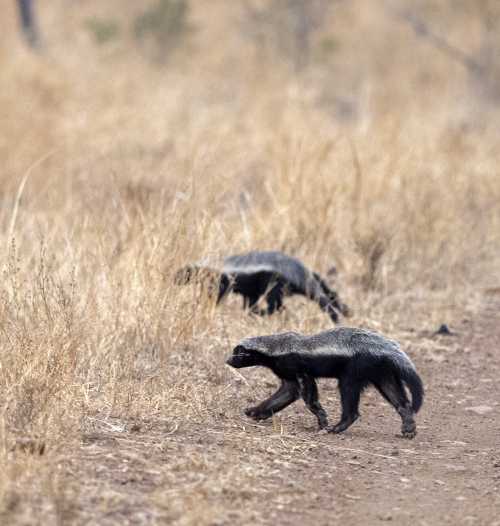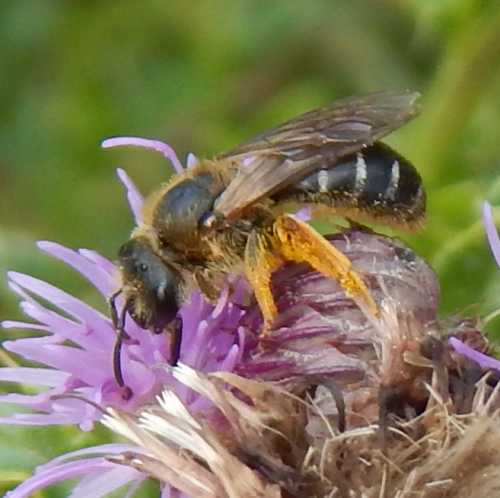Bee Facts
Bees really are amazing, and all the time, scientists are discovering something new. Did you know that a bee has 5 eyes, that they evolved from wasps, and that they can't see red (even though they visit red flowers)?
Read on for amazing facts about bumble bees, solitary bees and honey bees.
Interesting Facts About Bees
- There are over 20,000 known species of bee in the world – and there
are probably more to be discovered.
- The majority of bees are solitary species, although some may build their nests close to each other. Read about sociality in bees.
- Bees have different life spans, depending on the kind of bee, and role within the colony! Read more:
How Long Do Bees Live?

- Depending on the species, bees may nest in the ground, or in cavities
(such as in tree trunks, or crevices in buildings). Watch mason bees in their bee house.
Some species nest on the surface of the ground, on tussocks of grass. Learn more about bee nests.
- Bees sleep! That's right, researchers have studied bees, and have learned that they adopt behaviours which would indicate they snooze.
- Bees eat nectar and pollen, but there are exceptions to this rule, including some stingless bees that eat meat!
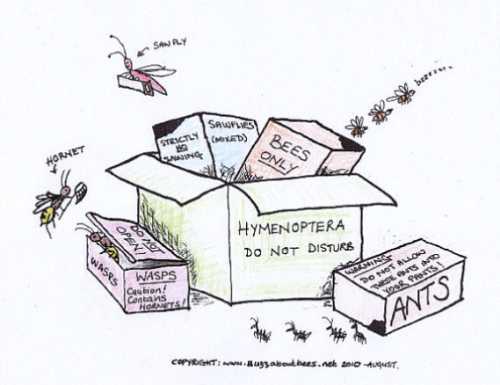
- Bees belong to the insect order, Hymenoptera, along with wasps, ants and sawflies.
- Bees are important indicators for the health of the environment. When
something is wrong with our bees, something is wrong in the environment!
- Bees have different tongue lengths, depending on the species, and are categorized as long or short-tongued.
- Bees have 5 eyes – 3 simple eyes on top of the head, and 2 compound eyes, with numerous hexagonal facets.
- Bees are trichromatic – just like humans. However, humans base their
colour vision on the colours red, green and blue, where as bees base
their colour vision on blue, green and UV. Bees cannot see red, but
visit red flowers because they are able to see the UV markings on the
petals.
Read more about how flowers attract their ideal pollinators on my page about Flower Pollination. - All bees have two pairs of wings (as do wasps). But identifying and
distinguishing between the different types of bees is not always easy!
Read more about
Bee Identification.
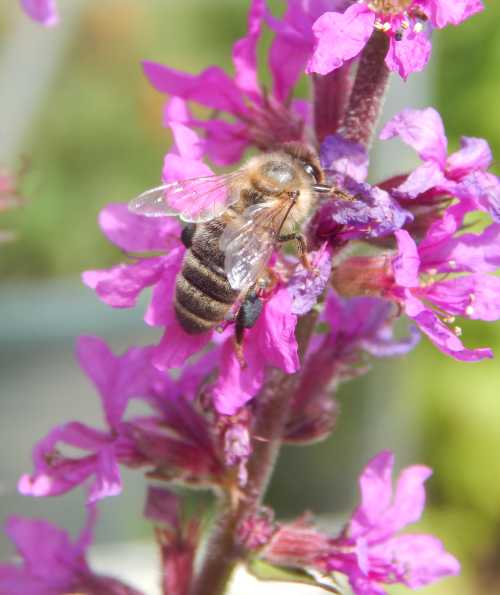
- It is believed that bees first appeared about 130 million years ago, along with the first flowering plants (angiosperms).
- The earliest known fossil bee is of Trigona prisca (Meliponinae), found in amber dating from 74 to 94 million years ago.
- Bees are believed to have evolved from wasps.
- The largest bee in the world is reputed to be Megachile pluto1,
also known as Wallace's giant bee whose females can attain a length of 39 mm (1.5")
although apparently, males only grow to about 23 mm (0.9") long.
- The smallest bee in the world is believed to be Quasihesma clypearis. The recorded male length is about 1.8mm, with a wing length of about 1.2mm. The length of the female is recorded as being about 2.1mm in length. However, there is another contender for the title called Perdita minima.
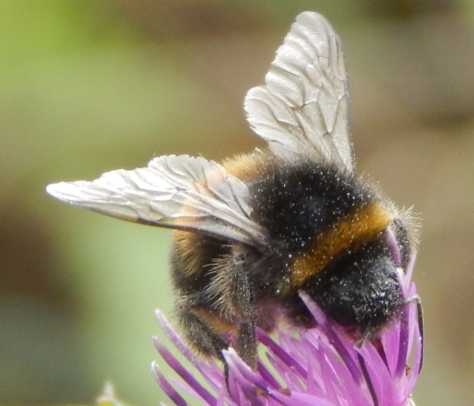
- Bees are outstanding pollinators generally, but some bees are better
suited to pollinating certain plants than other bees, depending on the
bee’s method for collecting the pollen, the body shape of the bees, the
tongue length, flower preference and so on. Some bees may visit a
plant, but not actually pollinate it! Read more about
bee pollination.
- During October 2010, the United Nations published a report, in which they place a value on insect pollination at £134 billion (153bn Euros). A significant portion of this pollination service is provided by bees (although they are not the only insect pollinators).
References
1. Natural History Museum, London.
See links to other pages for further information.
If you found this page helpful or interesting, I'd really be grateful if you would share it with others - if not this page, perhaps another, such as Gardening For Bees.
Thank you so much :) .
